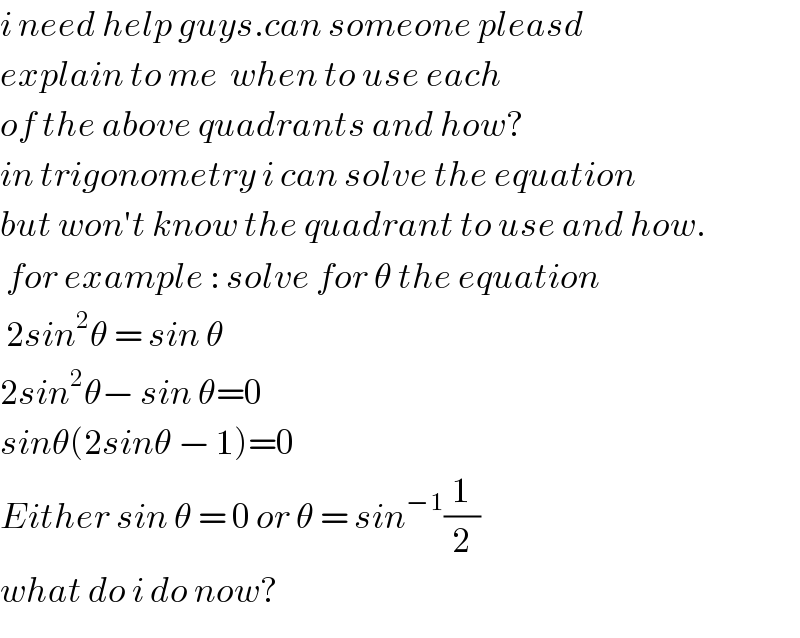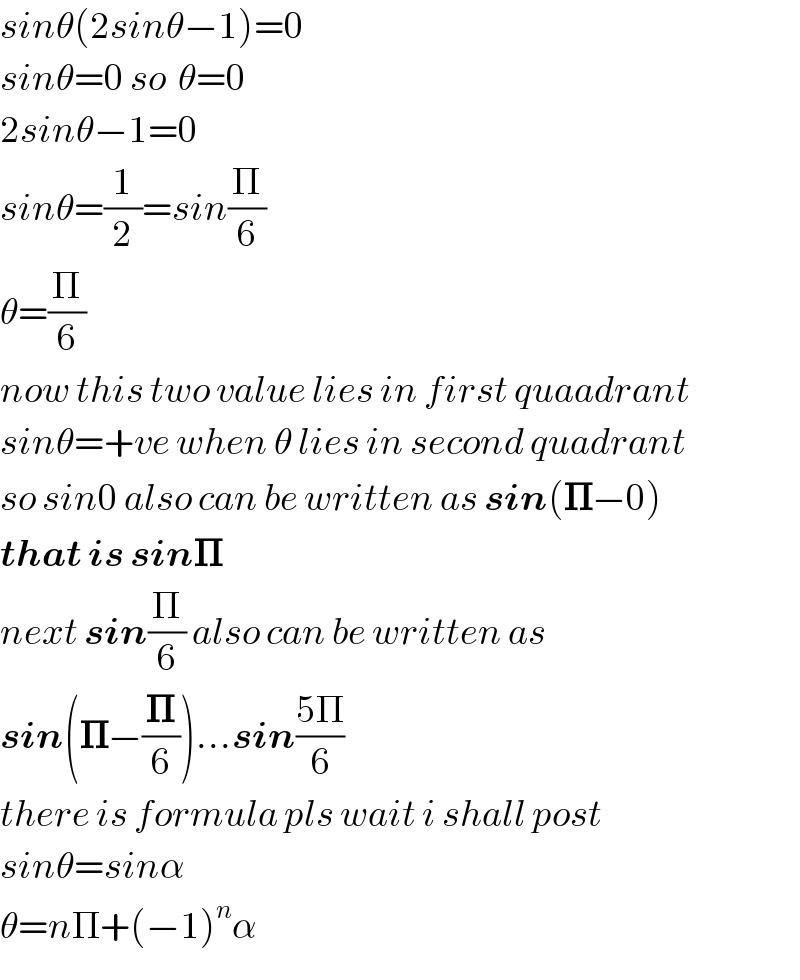
Question and Answers Forum
Question Number 39529 by Rio Mike last updated on 07/Jul/18

Commented by Rio Mike last updated on 07/Jul/18

Commented by Rio Mike last updated on 07/Jul/18

Commented by tanmay.chaudhury50@gmail.com last updated on 07/Jul/18

Commented by tanmay.chaudhury50@gmail.com last updated on 07/Jul/18

Commented by MJS last updated on 07/Jul/18
![in geometric examples you have to think which solution fits. i.e. if you calculate an angle of a triangle it must fit into this triangle (α+β+γ=180°) in “free from any praxis” examples you′ll have to deal with more than one possible solutions, same as in equations of 2^(nd) or higher degree. it might help to think of the coordinates of the points of the circle x^2 +y^2 =1 ⇒ ⇒ cos^2 α +sin^2 α=1 ⇒ ⇒ P= (((cos α)),((sin α)) ) 0°<α<90° ⇒ P in 1^(st) quadrant 90°<α<180° ⇒ P in 2^(nd) quadrant 180°<α<270° ⇒ P in 3^(rd) quadrant 180°<α<360° ⇒ P in 4^(th) quadrant α=0°=360° ⇒ P on x^+ α=90° ⇒ P on y^+ α=180° ⇒ P on x^− α=270° ⇒ P on y^− electronic calculators handle angles in ]−180°; 180°] instead of [0°; 360°[ or in radiant ]−π; π] instead of [0; 2π[ you have to be careful with arc−functions (always remember what was the question, or/and try the other possibilities to find out which answer fits into the given example) 0° 45° 90° 135° 180° 225° 270° 315° 360° 0° 45° 90° 135° 180° −135° −90° −45° 0° 0 (π/4) (π/2) ((3π)/4) π ((5π)/4) ((3π)/2) ((7π)/4) 2π 0 (π/4) (π/2) ((3π)/4) π −((3π)/4) −(π/2) −(π/4) 0](Q39542.png)
